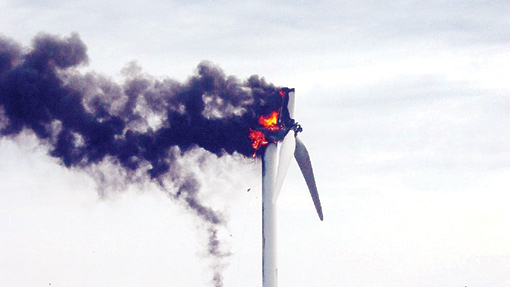Top tips to get renewable energy insurance right

Insurance is an important area, which the renewable energy entrepreneur must consider carefully.
We look at how to tailor insurance to protect your investment and income.
We also cover aspects of security of the site and advice on checking the small print.
Insurance cover for renewable energy installations can be added to existing farm policies, but this is likely to only cover only damage. It is therefore important to tailor cover to protect both the investment and the income it provides, says John Pieri of H&H Insurance Brokers, Carlisle.
He urges those with installations to check, check and check again what protection their cover gives.
Whether for a wind turbine, anaerobic digester or photovoltaic (PV) solar panels, the main areas of cover are essentially the same and must be separately considered and arranged:
- Damage – covers storm, fire, lightning, accidental damage and malicious damage
- Breakdown cover – pays for parts and labour following a breakdown
- Theft – especially cabling and smaller ancillary parts
- Loss of revenue – protects any loss of revenue following damage or breakdown, also referred to as income protection or profits cover
- Public liability – protects against third-party damage or injury, particularly relevant to turbines if they are near another property.
As well as relying on their direct experience of the renewable energy market and its risks, UK insurers use information from Europe, where the market is more developed and there is more historical information, says Mr Pieri.
As a result, some insurers will no longer provide cover for certain makes or models that are known to have poor loss ratios or unreliable technology, so it is worth checking the availability of cover before committing to a model or make.
“Particular attention needs to be paid to the construction and operational phases, as the standard of insurance cover required for each differs. Loss of profits needs to be considered, especially if there is a delay with the construction.”
Biomass brings its own particular risks, which some may not appreciate and which may not be included in a standard policy, he says. These include:
- Fire or explosion
- Breakdown
- Spontaneous combustion of fuel stock – woodchips should be kept in a well-ventilated storage area
- Protective breathing equipment may be needed for those handling very dry, dusty material.
Consider effect of security on cover
Security is an important issue for some renewables installations, especially PV sites, says Paul Mahon, head of business development for insurer Cornish Mutual.
This is just one of the many factors that have to be taken into account when cover is being arranged for turbines or PV installations:
- Site location – is it near public rights of way or highways?
- Site protection and security – fencing, surveillance and maintenance of site (cutting vegetation if ground-mounted PV, details of roof age/construction/material if roof-mounted)
- Protection against lightning and overvoltage, as well as any particular exposure to weather events such as flood
- Are any remote monitoring systems in place?
- Details of maintenance agreements or warranties
- For loss-of-income cover – calculate anticipated annual income, amount of electricity produced, Feed-in Tariffs and self-generated electricity consumed
Check the small print before installation starts
Whether you have a wind turbine, an anaerobic digester, solar panels or a biomass boiler, it’s a case of checking all the details well before installation begins.
The contract to supply and/or install equipment may contain unexpected detail, warns Mike Ellis of Rural Insurance.
For example, the responsibility for insurance may pass to the new owner on delivery or on commissioning, or the contract may specify a joint approach. “So it’s important to make sure the construction phase is covered right from the start, even before day one in some cases, so that transit is covered if necessary,” says Mr Ellis.
About 60% of farm renewable energy claims dealt with by Rural Insurance are for breakdowns, either of mechanical or electrical equipment. Many operators assume breakdowns are covered during the warranty period, but this is not always the case, he says.
“There are exclusions and we are getting claims where the warranty has not paid up for repairs, so if you have insurance in place in a situation like this at least you are in charge of getting it fixed.”
Further issues arise where the renewables project is on land leased to the operator or developer or where there is a joint venture.
Informing insurers of these arrangements is very important, stresses Mr Ellis. “We would make a note on the policy where land is leased to a third party. Such arrangements can change the nature of the risk we are insuring. For example, the farmer may damage the third-party equipment, there could be access issues or it could affect his farming operations.
